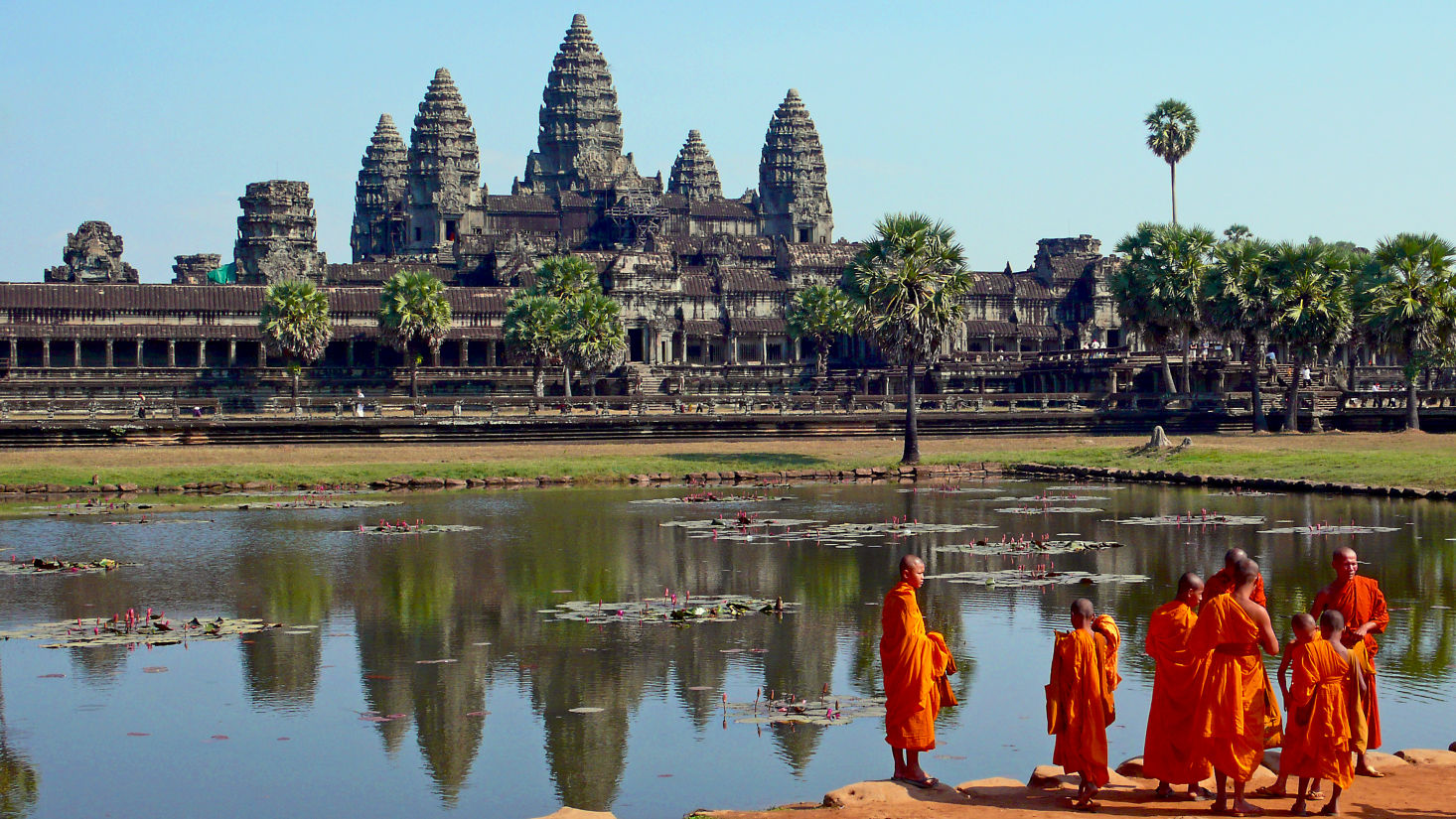
MENZZOO MAGAZINE

ANGKOR WAT
Angkor Wat is a Buddhist temple complex in Cambodia and is the largest religious monument in the world, on a site measuring 162.6 hectares. Originally constructed as a Hindu temple dedicated to the god Vishnu for the Khmer Empire, it was gradually transformed into a Buddhist temple towards the end of the 12th century.
Angkor Wat is the most famous ancient temple site in Cambodia. With its 5 lotus-like towers rising 65 metres into the sky, it is an awe-inspiring sight. Located in Siem Reap, this World Heritage site was once the largest pre-industrial city in the world. It remains one of the world's ancient wonders and is a must-see for any visitor to Cambodia.
The temple ruins are at the centre of the vast Angkor Archaeological Park. You can arrange a tour of the park with a reputable agency and guide, who'll be able to help buy the admission pass and arrange your transport. Or find a local Tuk Tuk driver to take you around the sites for around $10 USD a day. Some can also explain the history of the temples.
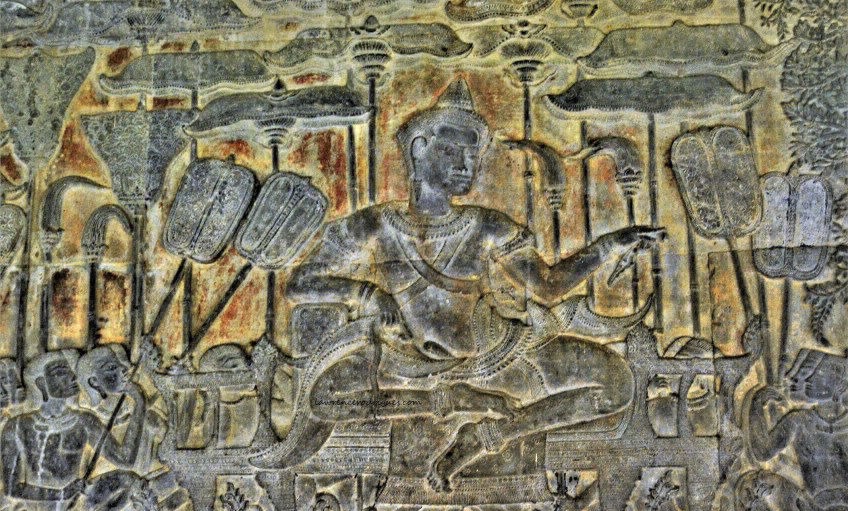
A stone carving depicting the Khmer King Suryavarman II
THE HISTORY OF ANGKOR WAT
The temple ruins are what remains of the ancient Khmer Empire. The empire encompassed much of Southeast Asia from the 9th to the 13th century. It dominated the area of present-day Cambodia, as well as a lot of Thailand stretching right down to Malayasia, southern Vietnam and Laos. At its height of power and success, more than a million people lived in the capital city at Angkor.
Angkor Wat lies 5.5 kilometres (3.4 mi) north of the modern town of Siem Reap, and a short distance south and slightly east of the previous capital, which was centred at Baphuon. In an area of Cambodia where there is an important group of ancient structures, it is the southernmost of Angkor's main sites.
According to legend, the construction of Angkor Wat was ordered by Indra to serve as a palace for his son Precha Ket Mealea. According to the 13th-century Chinese traveller Zhou Daguan, some believed that the temple was constructed in a single night by a divine architect.
The initial design and construction of the temple took place in the first half of the 12th century, during the reign of Suryavarman II (ruled 1113 – c. 1150). Dedicated to Vishnu, it was built as the king's state temple and capital city. As neither the foundation stela nor any contemporary inscriptions referring to the temple have been found, its original name is unknown, but it may have been known as "Varah Vishnu-lok" after the presiding deity. Today it's known simply as 'Angkor Wat'.
Towards the end of the 12th century, Angkor Wat gradually transformed from a Hindu centre of worship to Buddhism, which continues to the present day.

THE RE-DISCOVERY OF
ANGKOR WAT
Angkor Wat is unusual among the Angkor temples in that although it was largely neglected after the 16th century it was never completely abandoned. Fourteen inscriptions dated from the 17th century discovered in Angkor area testify to Japanese Buddhist pilgrims that had established small settlements alongside Khmer locals there.
One of the first Western visitors to the temple was António da Madalena, a Portuguese friar who visited in 1586 and said ;
"It is of such extraordinary construction that it is not possible to describe it with a pen, particularly since it is like no other building in the world. It has towers and decoration and all the refinements which the human genius can conceive of."
In the mid-19th century, the temple was effectively rediscovered by the French naturalist and explorer Henri Mouhot in 1860, who popularised the site in the West through the publication of travel notes, in which he wrote:
"One of these temples, a rival to that of Solomon, and erected by some ancient Michelangelo, might take an honorable place beside our most beautiful buildings. It is grander than anything left to us by Greece or Rome, and presents a sad contrast to the state of barbarism in which the nation is now plunged."
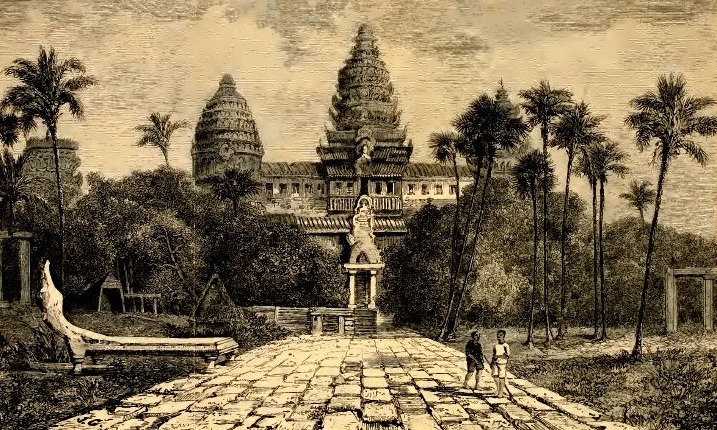
Facade of Angkor Wat, a drawing by Henri Mouhot, c. 1860
Mouhot, like other early Western visitors, found it difficult to believe that the Khmers could have built the temple and mistakenly dated it to around the same era as Rome. His reports inspired the French government, already an established presence in Indochina, to study the ruins. The true history of Angkor Wat was pieced together from stylistic and epigraphic evidence accumulated during subsequent clearing and restoration work.

ANGKOR ARCHITECTURE
Angkor Wat is the prime example of the classical style of Khmer architecture—the Angkor Wat style—to which it has given its name. By the 12th century Khmer architects had become skilled and confident in the use of sandstone (rather than brick or laterite) as the main building material. Most of the visible areas are of sandstone blocks, while laterite was used for the outer wall and for hidden structural parts. The binding agent used to join the blocks is yet to be identified, although natural resins or slaked lime has been suggested.
The temple has drawn praise above all for the harmony of its design. According to Maurice Glaize, a mid-20th-century conservator of Angkor;
"The Temple attains a classic perfection by the restrained monumentality of its finely balanced elements and the precise arrangement of its proportions. It is a work of power, unity and style'.
Architecturally, the elements characteristic of the style include: the ogival, redented towers shaped like lotus buds; half-galleries to broaden passageways; axial galleries connecting enclosures; and the cruciform terraces which appear along the main axis of the temple.
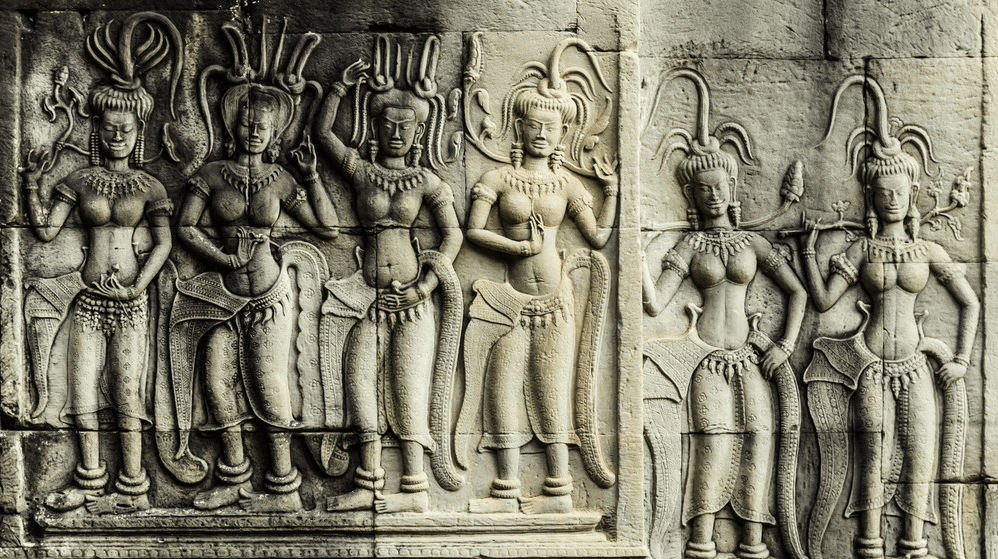
APSARA DANCERS AT
ANGKOR WAT
In Angkor Wat temple alone there are around 1,800 dancing goddesses carvings. At the Angkor Wat Complex there are two types of females represented, Apsaras and Devatas.
These Hindu spirits of cloud and water traditionally represented the paragon of feminine beauty, elegance and refinement. They are heavenly nymphs that dance and entertain, seducing both men and divinities.
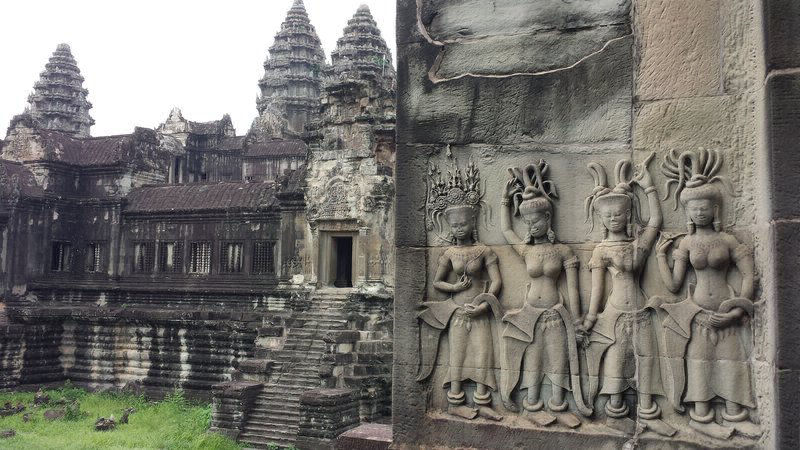
The Churning of the Ocean Milk-
The southern section of the east gallery is decorated by the most famous bas-relief scenes at Angkor Wat, the Churning of the Ocean of Milk. (an episode in Cambodia-Hindu mythology) This brilliantly executed carving depicts 88 asuras on the left, and 92 devas, with crested helmets, churning up the sea to extract from it the elixir of immortality.
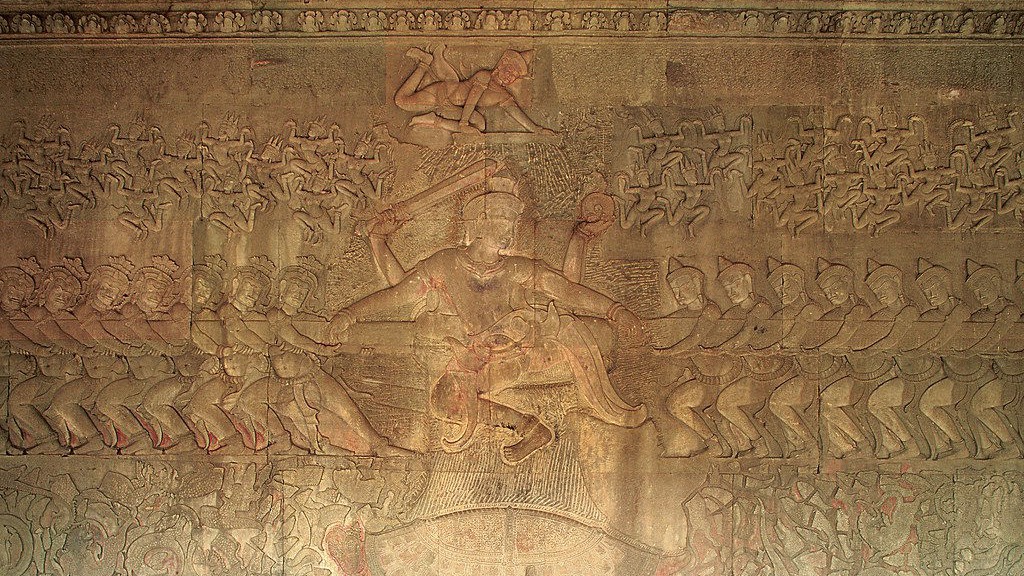
Stone carving depicting the Hindu ‘Churning of the Ocean Milk'
The demons hold the head of the serpent Vasuki and the gods hold its tail. At the centre of the sea, Vasuki is coiled around Mt Mandala, which turns and churns up the water in the tug of war between the demons and the gods. Vishnu, incarnated as a huge turtle, lends his shell to serve as the base and pivot of Mt Mandala. Brahma, Shiva, Hanuman (the monkey god) and Lakshmi (the goddess of wealth and prosperity) all make appearances, while overhead a host of heavenly female spirits sing and dance in encouragement. Luckily for us, the gods won through, as the apsaras above were too much for the hot-blooded devils to take. Restoration work on this incredible panel by the World Monuments Fund (WMF) was completed in 2012.
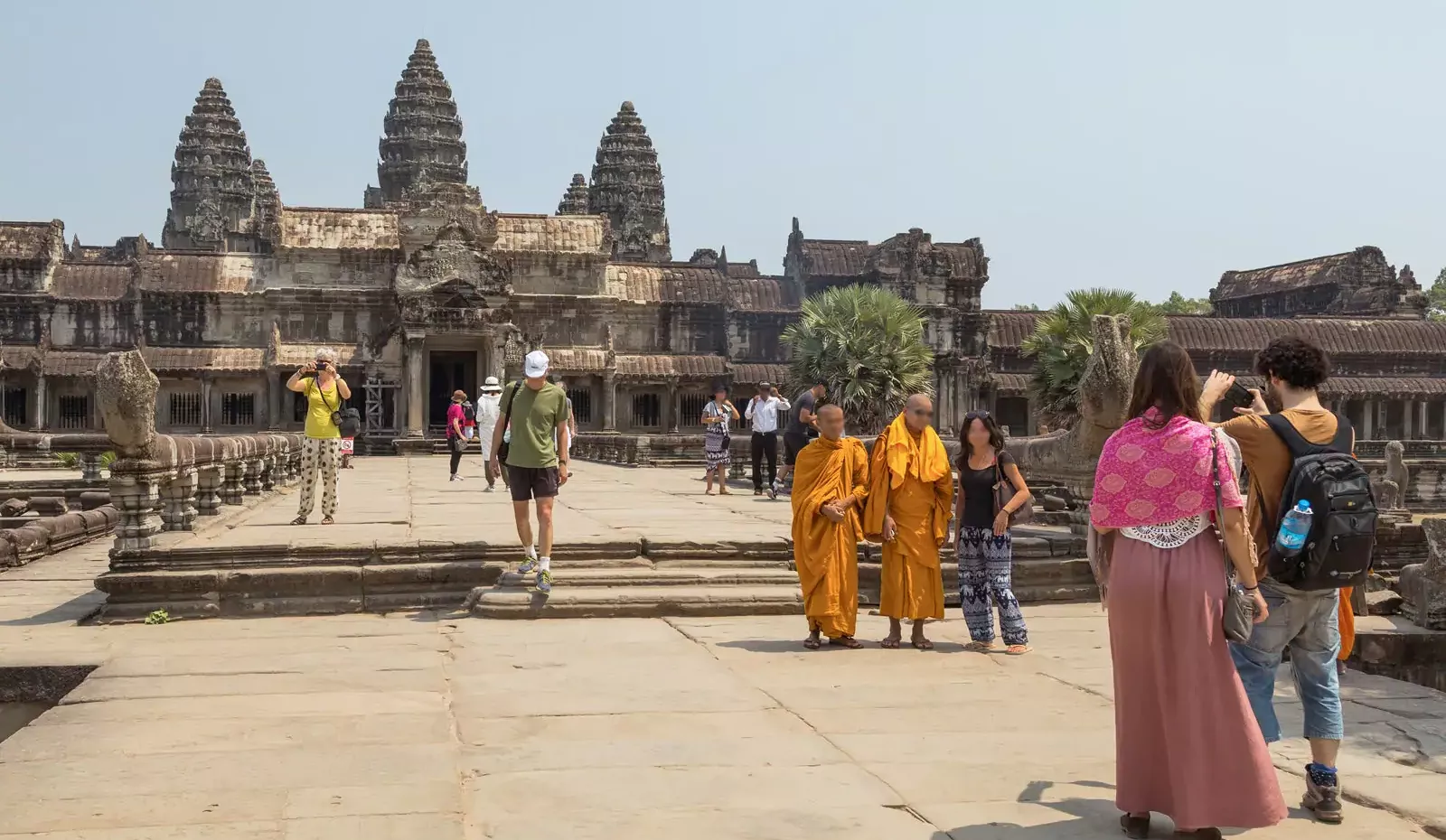
GETTING TO ANGKOR WAT
There are 2 main ways visitors get to Angkor Wat and the surrounding temples. You can join an organised trip or opt for a do-it-yourself tour. Depending on the size of your group, you can reach Angkor Wat by bus, minivan or tuk-tuk. If you're an adventurous type, you can visit the temples on a motorbike.
Entrance to Angkor Wat-
You need a valid admission pass (called an 'Angkor Pass') to enter the Angkor Archaeological Park. You can choose between a 1-day pass or multi-day pass to visit Angkor Wat. With the multi-day passes (3 or 7 days), you don't have to visit temples on consecutive days.
An Angkor Pass, at the time of writing (March 2020) is priced around $37USD for a 1-day pass, $62USD for a 3-day pass, and $72USD for a 7-day pass. Carry your temple pass with you at all times as you have to show it each time you enter the park and when entering major temples, including Angkor Wat.
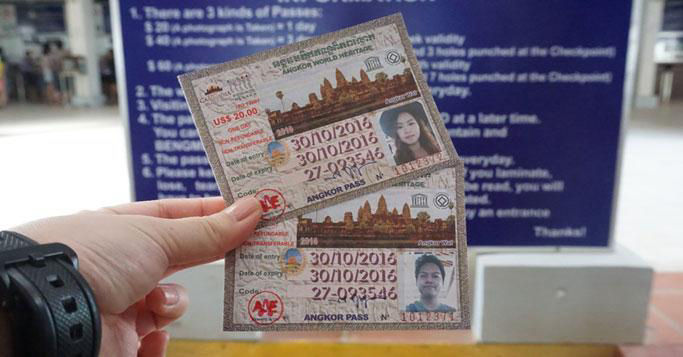
What to bring and wear-
A visit to Angkor Wat involves a lot of walking around in Cambodia's tropical climate. Light and comfortable clothing are strongly recommended, as is sunscreen, a hat and sunglasses. In the rainy season, a raincoat and/or umbrella will be very helpful. You should bring mosquito repellent if you're there at sunrise or sunset.
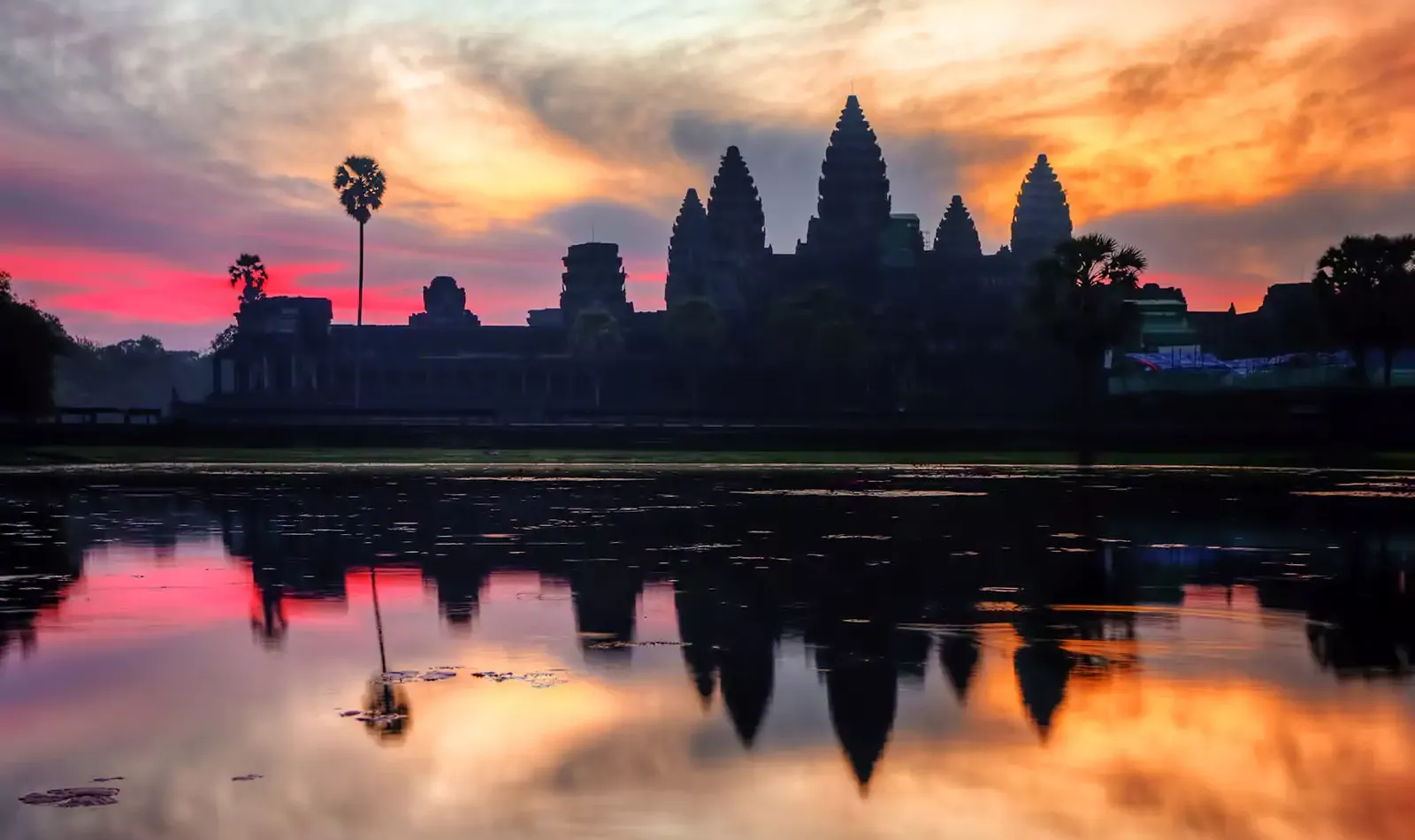
Build a website - Get more